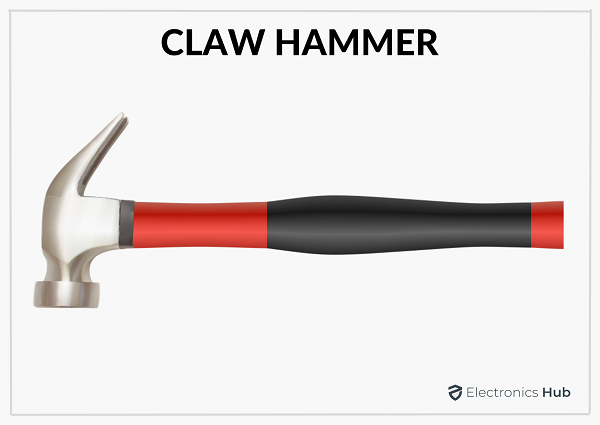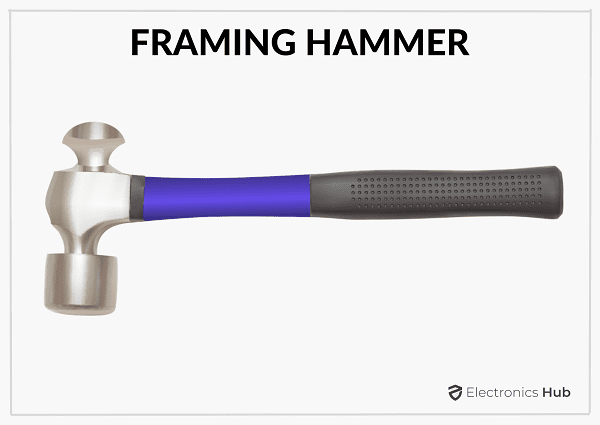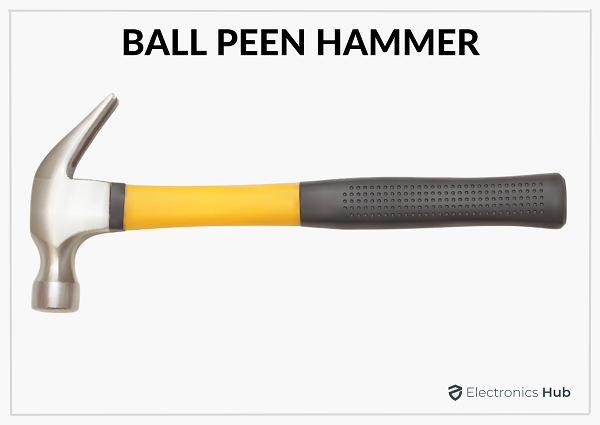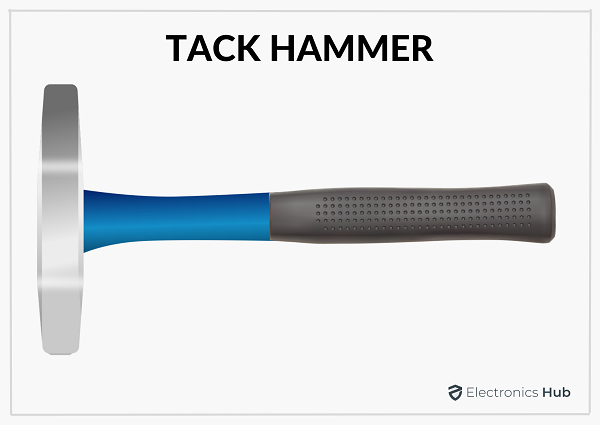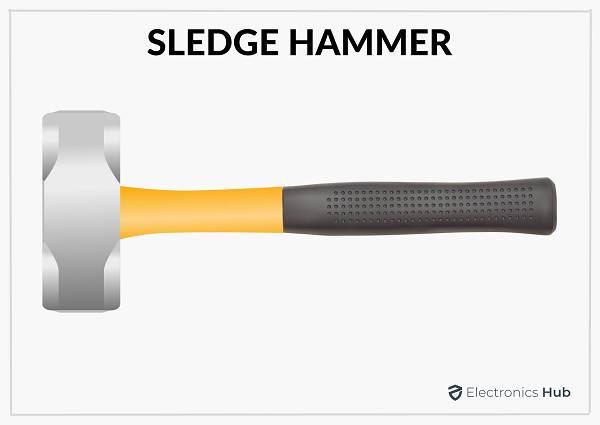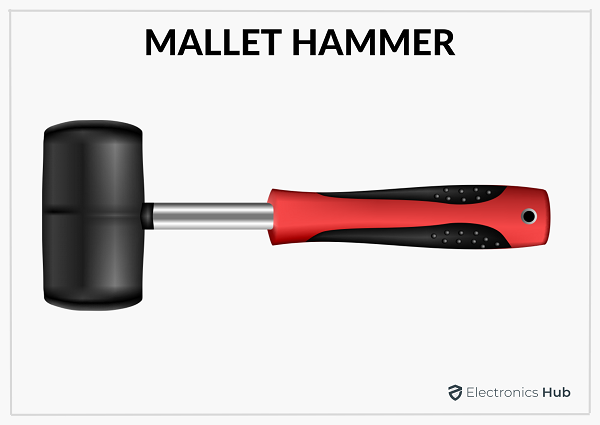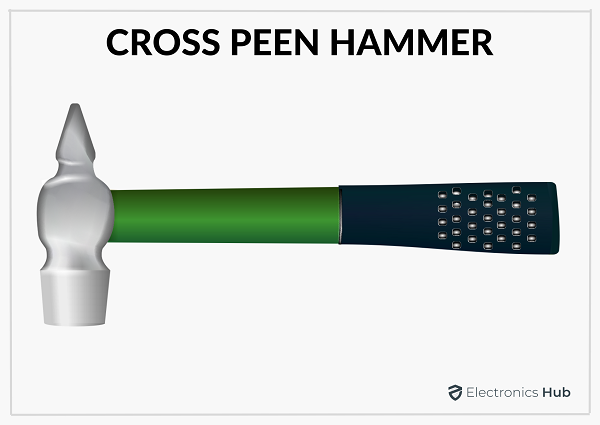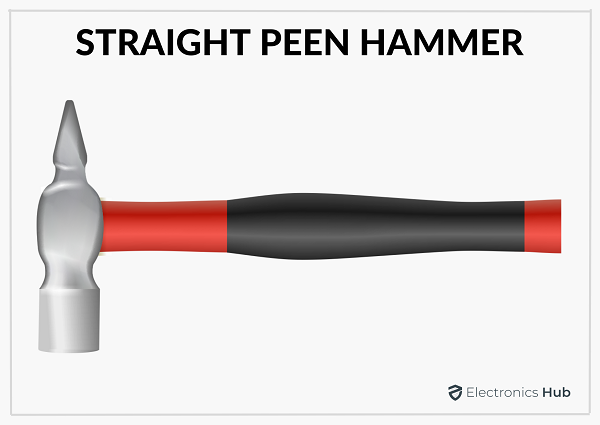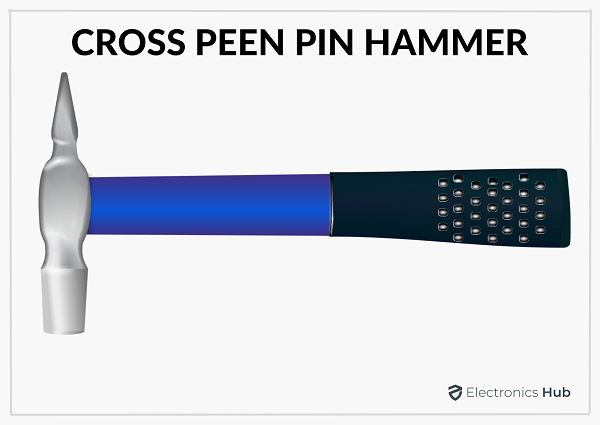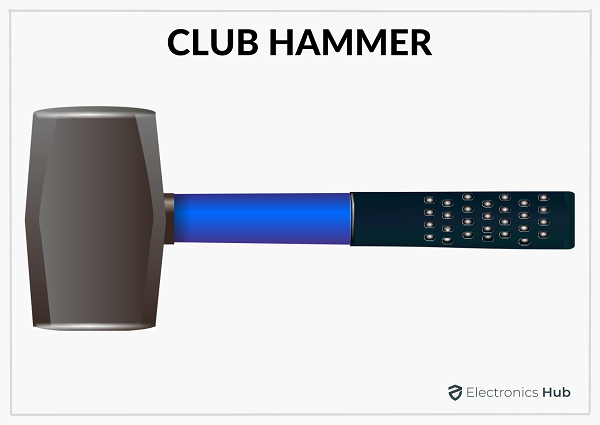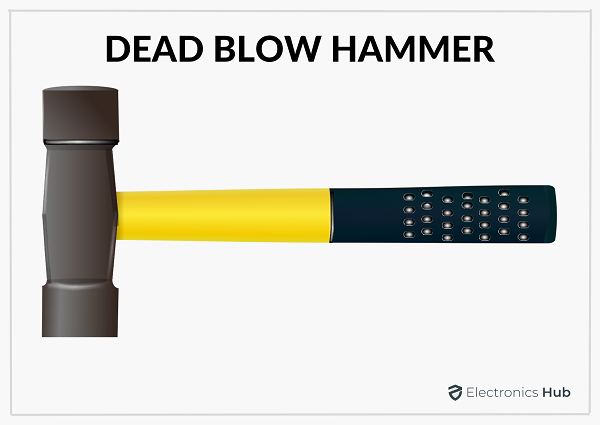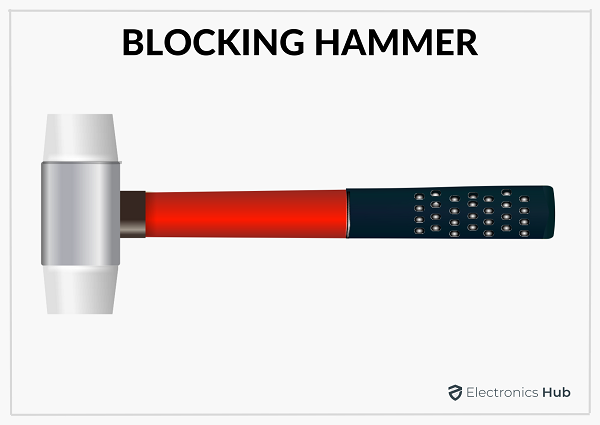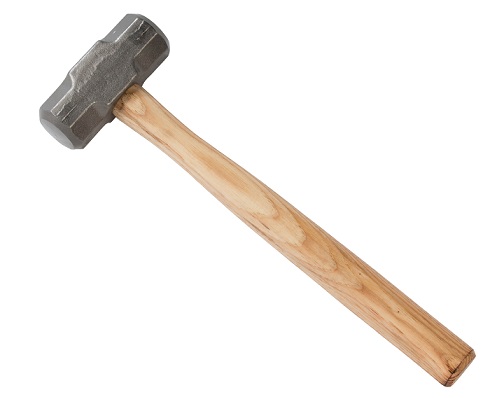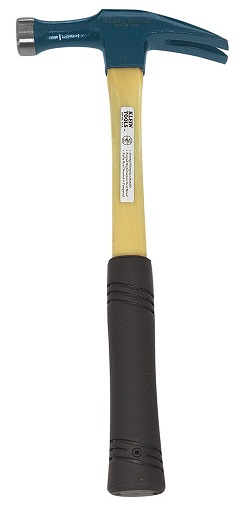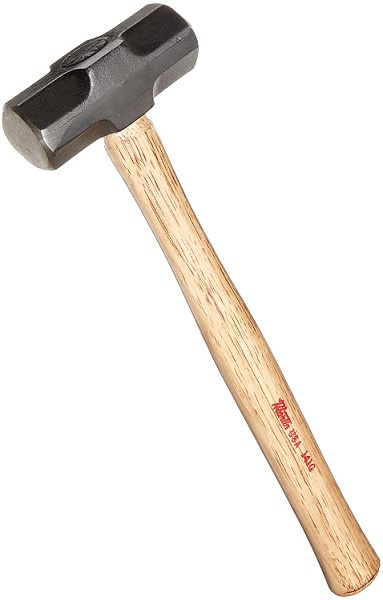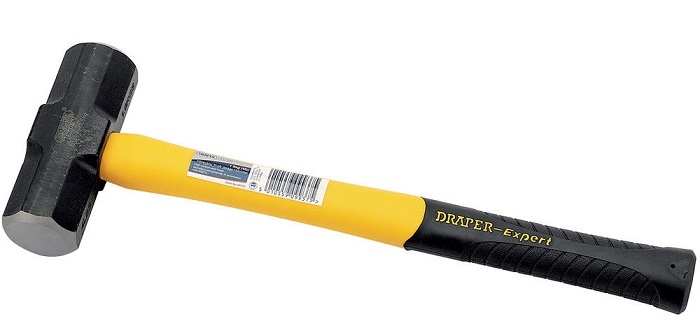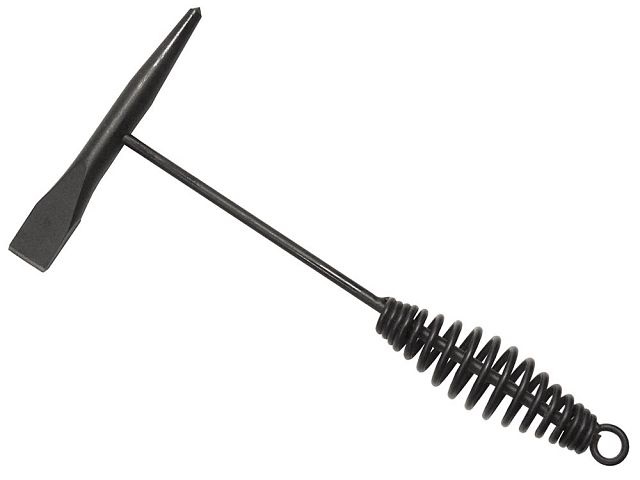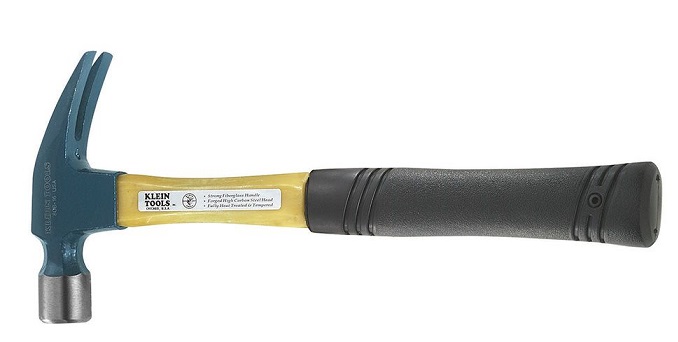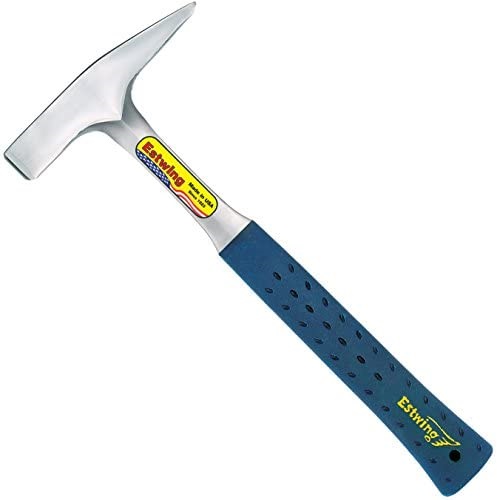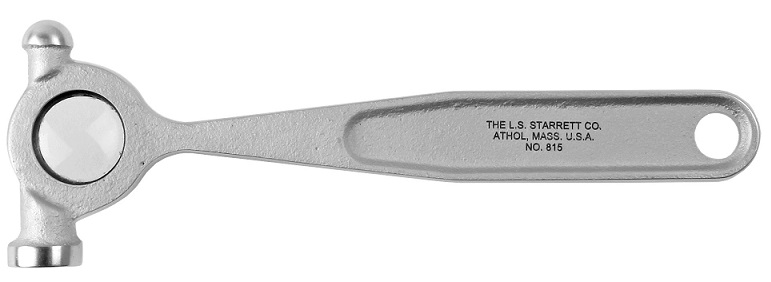Hammer is probably one of the oldest tools known to Man. In the pre-historic period, people used stones to hammer on objects, whether it is to crack nuts or break food. With the evolution of man, metal and technology, the shape and material of a hammer took an advancement but the idea remained the same: use the handle to hold the hammer and hit the object to make a powerful blow. You can use hammers to drive a nail into wood, shape a piece of metal, break an object and many other “hard hitting” tasks. In this guide, let us take a quick look at Different Types of Hammers that we encounter frequently.
Outline
Toggle- Hammer and Its Uses
- Parts of a Hammer
- Types of Hammers
- 1. Claw Hammer
- 2. Framing Hammer
- 3. Ball Peen Hammer
- 4. Tack Hammer
- 5. Sledgehammer
- 6. Mallet
- 7. Cross Peen Hammer
- 8. Straight Peen Hammer
- 9. Cross Peen Pin Hammer
- 10. Club Hammer
- 11. Dead Blow Hammer
- 12. Blocking Hammer
- 13. Engineering Hammer
- 14. Electrician’s Hammer
- 15. Blacksmith’s Hammer
- 16. Blacksmith’s Sledge Hammer
- 17. Welder’s Hammer
- 18. Body Mechanic’s Hammer
- 19. Tinner’s Hammer
- 20. Toolmaker’s Hammer
- 21. Lineman’s Hammer
- 22. Rock Hammer
- 23. Slater’s Hammer
- 24. Rock Climbing Hammer
- 25. Piton Hammer
- 26. Brass Hammer
- 27. Rip Hammer
- 28. Bushing Hammer
- 29. Hatchet Hammer
- 30. Half Hatchet Hammer
- 31. Drywall Hammer
- 32. Brick Hammer
- 33. Lath Hammer
- 34. Stone Sledge Hammer
- 35. Copper and Hide Hammer
- 36. Planishing hammer
- 37. Trim Hammer
- 38. Chasing Hammer
- 39. Knife-Edged Hammer
- 40. Shingle Hammer
- 41. Splitting Maul Hammer
- 42. Scaling Hammer
- 43. Soft Face Hammer
- 44. Railroad Spike Maul Hammer
- 45. Boiler Scaling Hammer
- 46. Scutch Hammer
- 47. Dental Hammer
- 48. Gavel Hammer
- 49. Power Hammer
- 50. Jackhammer
- Different Types of Hammer – FAQs
- Conclusion
Hammer and Its Uses
Whether you are a carpenter or metal worker or if you work in automobiles or construction, irrespective of the type and nature of the job, you will use a hammer very frequently. It is one of the simplest hand tools known to mankind and it has one job: hit an object with great impact.
The process of striking an object with a hammer is known as Hammering. Most modern hammers are made up of heat-treated steel head and a wooden, steel or plastic handle. Hammers are one of the essential woodworking tools.
Parts of a Hammer
The following image shows different parts of a claw hammer. These parts remain the same for other types of hammers with some minor differences.
Image
- Head: It is responsible for creating the impact while hammering. It is usually made up of metal but sometimes glass, wood and rubber are also used. Hammer Head can have a variety of size, shape and weight depending on its use and type of the hammer.
- Face: It is the front of the hammer that makes contact with the object being hammered. Depending on the type of hammer, face can have different shape and size. Apart from these, some hammers also have a texture on the face of hammer so that you can give a special and unique finish to metal or wood.
- Handle: As the name suggests, it is the part that we use to handle the hammer. Most hammers have a wooden handle but some of them have metal or plastic handles.
- Neck: It is the part of hammer that attaches the head with the handle
- Peen/Claw: It is on the other side of the face. We use claw to pull nails and peen to work on metals (peening). You have to make an important decision while buying a hammer whether it comes with a claw or a peen.
- Grip: If the handle is made up of metal, then a rubber grip will help the hammer from slipping from your hands. Hammers with wood handles generally don’t come with grip.
Types of Hammers
Following is a list of different types of Hammers. The first six hammers in the list are most popular, while the remaining hammers are specialty, niche or purpose-built hammers.
- Claw Hammer
- Framing Hammer
- Ball Peen Hammer
- Tack Hammer
- Sledgehammer
- Mallet
- Cross Peen Hammer
- Straight Peen Hammer
- Cross Peen Pin Hammer
- Club Hammer
- Dead Blow Hammer
- Blocking Hammer
- Engineering Hammer
- Electrician’s Hammer
- Blacksmith’s Hammer
- Blacksmith’s Sledge Hammer
- Welder’s Hammer
- Body Mechanic’s Hammer
- Tinner’s Hammer
- Toolmaker’s Hammer
- Lineman’s Hammer
- Rock Hammer
- Slater’s Hammer
- Rock Climbing Hammer
- Piton Hammer
- Brass Hammer
- Rip Hammer
- Bushing Hammer
- Hatchet Hammer
- Half Hatchet Hammer
- Drywall Hammer
- Brick Hammer
- Lath Hammer
- Stone Sledge Hammer
- Copper and Hide Hammer
- Planishing hammer
- Trim Hammer
- Chasing Hammer
- Knife-Edged Hammer
- Shingle Hammer
- Splitting Maul Hammer
- Scaling Hammer
- Soft Face Hammer
- Railroad Spike Maul Hammer
- Boiler Scaling Hammer
- Scutch Hammer
- Dental Hammer
- Gavel Hammer
- Power Hammer
- Jackhammer
Let us now take a brief look at all these hammers one-by-one.
1. Claw Hammer
A claw hammer is perhaps the most popular hammer among home users, DIYers, wood workers (carpentry and furniture) and metal workers. You can drive nails with the face and remove the nails using the claw. A claw hammer is usually made up of a metal head and a wooden handle.
2. Framing Hammer
Even though it looks very similar to a claw hammer, the framing hammer is a specialized tool used for wood framing. It is a must have tool for carpenters and woodworkers who often drive nails into frames walls of houses. It is slightly longer and heavier than a typical claw hammer and also has a fairly straight claw. As a result, it is not the best option for removing nails.
3. Ball Peen Hammer
Also known as the machinist’s hammer, a Ball Peen Hammer has flat face on one side of the head and a ball shaped face on the other side. Metal workers often use the round part of a ball peen hammer to shape metal without denting it.
4. Tack Hammer
The tack hammer is also known as Upholstery Hammer as we use it to drive small nails and brads into fabric or leather. It is a precision tool with a slim profile and is light in weight. Some tack hammers have a magnetic head to easily handle nails and tacks.
5. Sledgehammer
A sledgehammer is a heavy-duty hammer that is often used for demolition work to break down walls and other masonry. It has a large metal head with face on both sides and a long handle to easily swing it.
6. Mallet
A mallet has a large rubber (sometimes wood but very niche) head with a relatively small handle. We use mallets to knock or tap on objects with soft blows without damaging or denting. You can use a mallet to knock on woods to join them or on a chisel while carving.
7. Cross Peen Hammer
One side of a cross peen hammer is a regular flat head but the other side is wedge shaped peen. If you are worried about hitting your fingers while peening a panel, then the cross-peen hammer is very useful due to wedged sides.
8. Straight Peen Hammer
It is very similar to the cross-peen hammer. But the main difference is that the wedge peen is aligned horizontally in a cross-peen hammer whereas it is aligned vertically in a straight peen hammer.
9. Cross Peen Pin Hammer
While a cross peen hammer is a specialty tool, the cross-peen pin hammer has a more specific use case. It is a slightly smaller version of cross peen hammer but it is not suitable for working on metals. We often use Cross Peen Pin Hammer to work with cabinets, furniture and other light wood working jobs.
10. Club Hammer
A club hammer is a miniature version of a sledgehammer in the sense that it has a small handle and a relatively small head (the head is still large when we compare it to other hammers). It isn’t practical to use a club hammer for hard demolition jobs but we can use it for light demolition works, or to break stones and masonry. We also use club hammers to drive chisels and masonry heads where precision is not important.
11. Dead Blow Hammer
Even though it is similar to a Mallet, a Dead Blow Hammer is very rarely used tool. Woodworkers and automotive garages use this hammer to give soft blows with very less recoil. It is often made with soft rubber or plastic as not to damage or form dents in the surrounding parts.
12. Blocking Hammer
Blacksmiths frequently use Blocking Hammers to work on detailing of metal. It has two faces, one with a flat and square head while the other is a cylindrical head. The handle is just a regular wooden handle.
13. Engineering Hammer
The Engineering Hammer or Engineer’s Hammer is primarily used in locomotive and automotive repairs. Majority of engineering hammers have a heavy double round-faced head but some also have a round head and a cross peen.
14. Electrician’s Hammer
An Electrician’s Hammer is very similar to a claw hammer but the main difference is its long neck. This longer than normal neck will help electricians reach difficult places such as access holes of distribution boxes.
15. Blacksmith’s Hammer
This a specialty tool often used by blacksmiths. One side of the head is rounded while the other side is tapered. Using this tool, blacksmiths can easily shape, bend or cut hot metals.
16. Blacksmith’s Sledge Hammer
It is very similar to a regular sledgehammer with the exception that blacksmiths use this hammer to work on heavy metals such as iron to create large impact force and shape the metal.
17. Welder’s Hammer
A Welder’s Hammer is also known as a Chipping Hammer as welders primarily use it to chip or remove the waste or slag around a welding point. It is a niche tool and is not for everyone.
18. Body Mechanic’s Hammer
A Body Mechanic’s Hammer has a unique shape with a round and flat head on one side and a pointed peen on the other side. Its primary use case is in automobile body workshops for removing dents and other car repairs.
19. Tinner’s Hammer
This hammer has a square and flat head on one side and pointed cross peen on the other. Metal workers often use Tinner’s Hammer while metal roofing as they can easily roll the edges of metal and also work on the seams.
20. Toolmaker’s Hammer
At first glance, this tool doesn’t look like a hammer but is a special purpose hammer with a small flat head on one side and a rounded head on the other. There is also magnifying glass in the center of the hammer.
21. Lineman’s Hammer
A lineman’s hammer, as the name suggests, is used by linemen who work on utility and telephone poles. The main job of these tools is to hammer large bolts and screws. This hammer has dual circular flat heads on either side and a rubber grip handle that acts as a shock absorber.
22. Rock Hammer
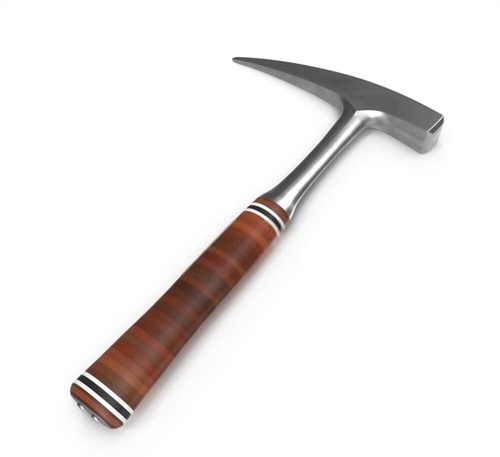
23. Slater’s Hammer
The Slater’s Hammer is a specialty tool that can do up to four jobs. You can use the claw to remove nails, drive nails with hammer head, punch holes with the pointed head and trim the edges of a slate to fit it properly.
24. Rock Climbing Hammer
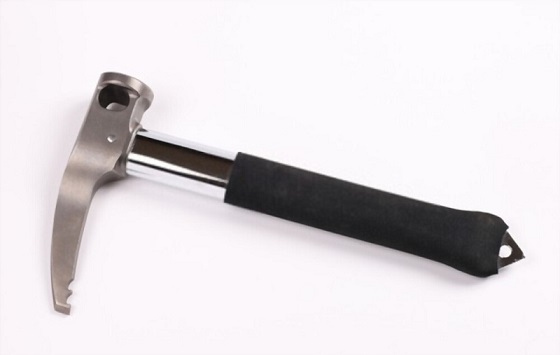
25. Piton Hammer
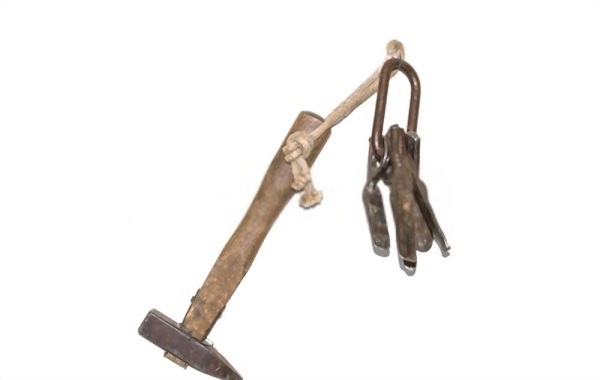
26. Brass Hammer
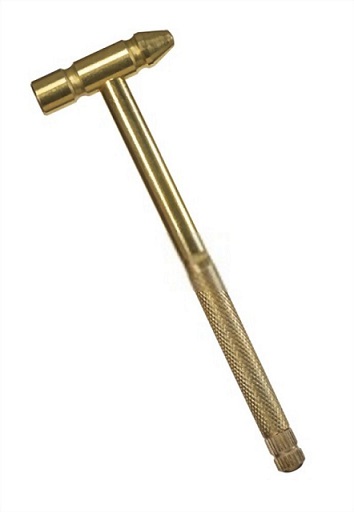
27. Rip Hammer
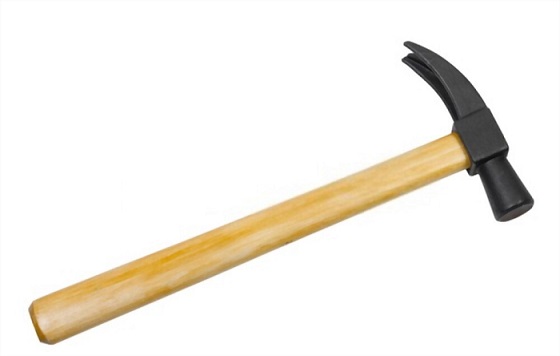
28. Bushing Hammer
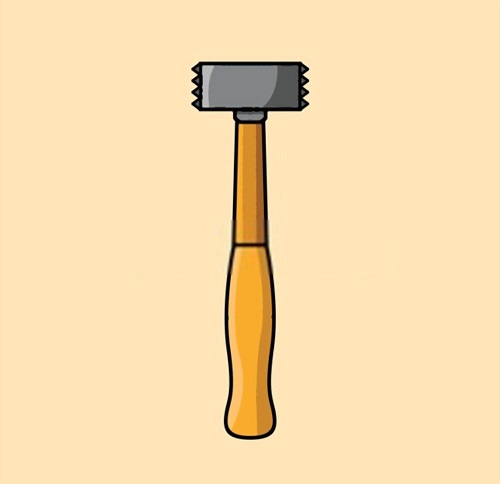
29. Hatchet Hammer
The Hatchet Hammer is a cross between a hammer and an axe. One side of the head is a circular hammer with a flat face while the other side has an axe blade. Most survival and emergency kits have these hammers.
30. Half Hatchet Hammer
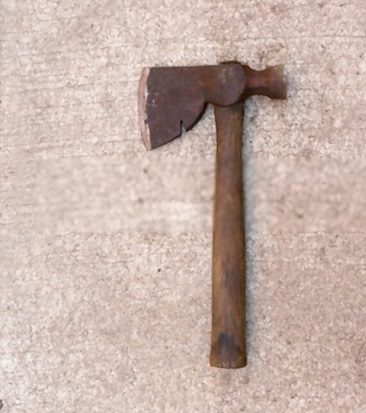
31. Drywall Hammer
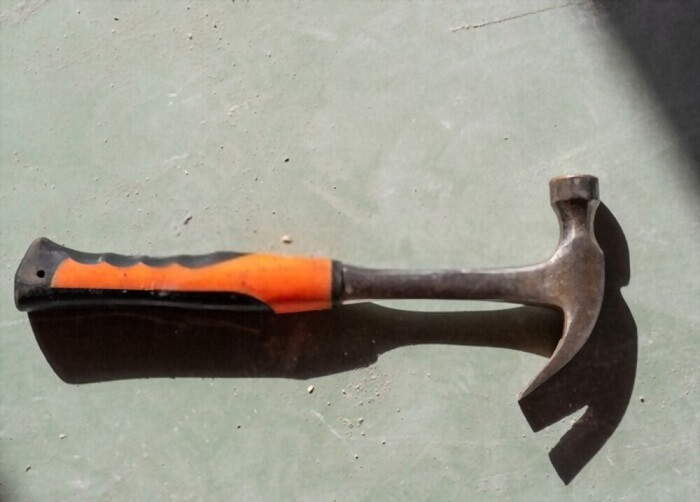
32. Brick Hammer
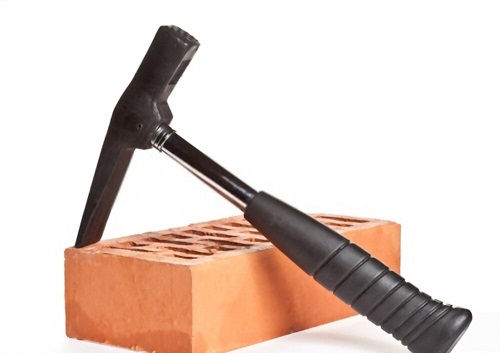
33. Lath Hammer
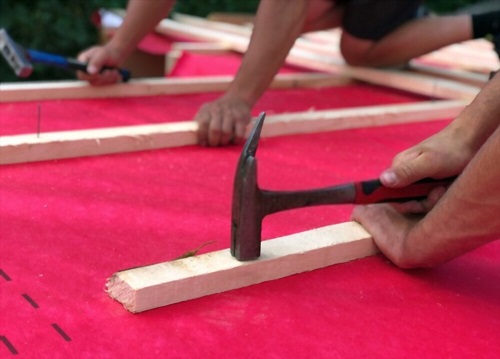
34. Stone Sledge Hammer
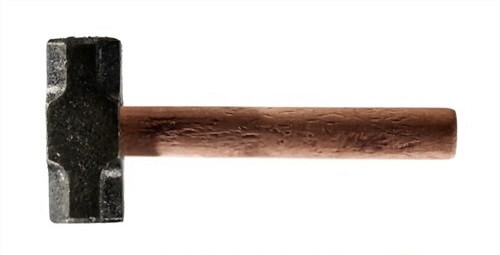
35. Copper and Hide Hammer
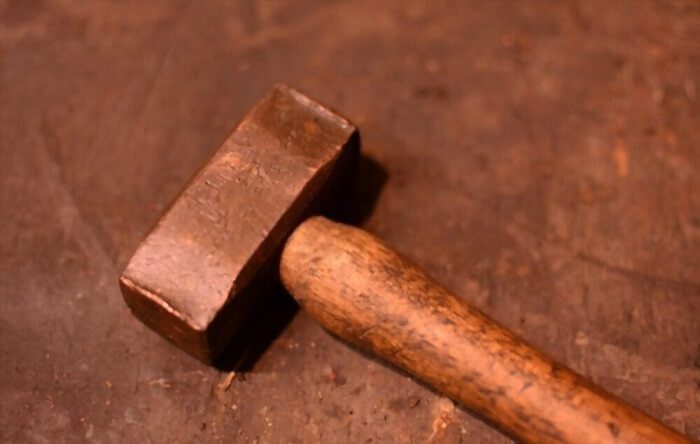
36. Planishing hammer
A Planishing Hammer is used to smooth or flatten metal with light blows. The head has a unique convex cylindrical shape on both sides.
37. Trim Hammer
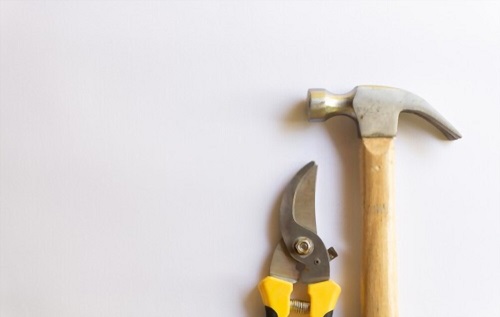
38. Chasing Hammer
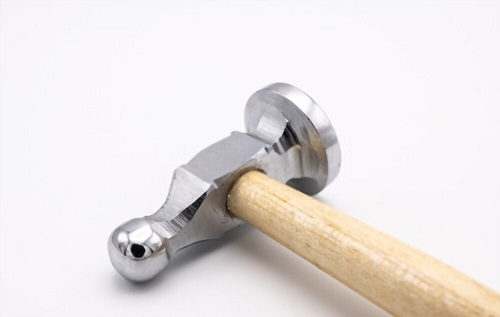
39. Knife-Edged Hammer
This hammer is not that common as there are other hammers and tools that does the job. In its simplest form, a knife0edged hammer has a flat square face on one side and a sharp axe like knife on the other. This is not a heavy-duty hammer but is often used to chop small wood.
40. Shingle Hammer
As the name suggests, a shingle hammer is used to cut shingles. It is also known as roofing hammer. Some shingle hammers have magnetic head to attract nails.
41. Splitting Maul Hammer
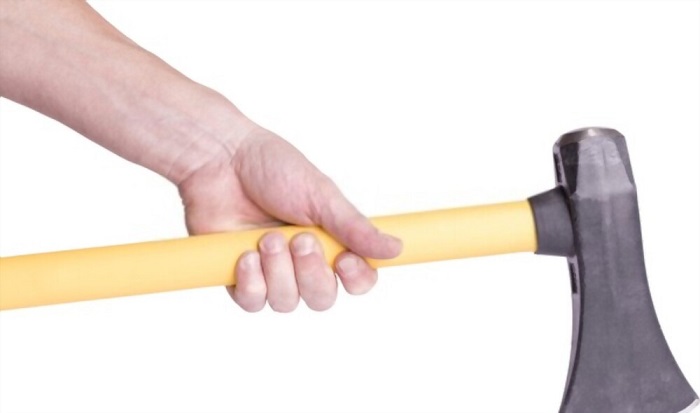
42. Scaling Hammer
A Scaling Hammer has a vertical chisel on one side of the head and a pick on the other. These hammers are often used to remove scaling, rust, paint and other coatings.
43. Soft Face Hammer
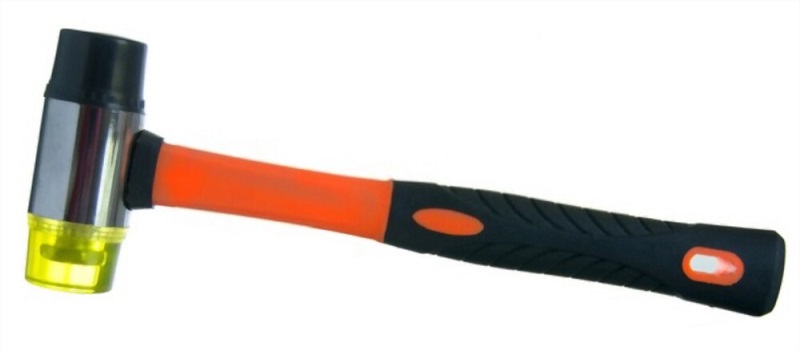
44. Railroad Spike Maul Hammer
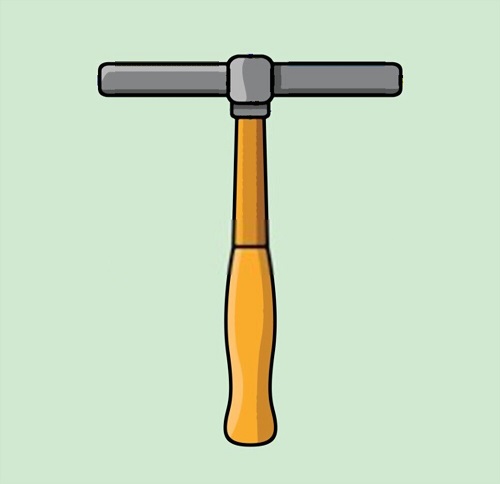
45. Boiler Scaling Hammer
This is also a scaling hammer that we use in boilers to remove scaling and other deposits from metal. Welders and fitters have this hammer in their toolkit. The hammer head has a unique dual chisel heads on both sides with horizontal and vertical faces.
46. Scutch Hammer
A Scutch Hammer is similar to a scutch chisel but in the shape and form of a hammer. Bricklayers and masons use these hammers for dressing and cleaning bricks. One side of the face is a familiar square flat face while the other side is a chisel like scutch comb. These hammers are not known for their precision but they get the job done.
47. Dental Hammer
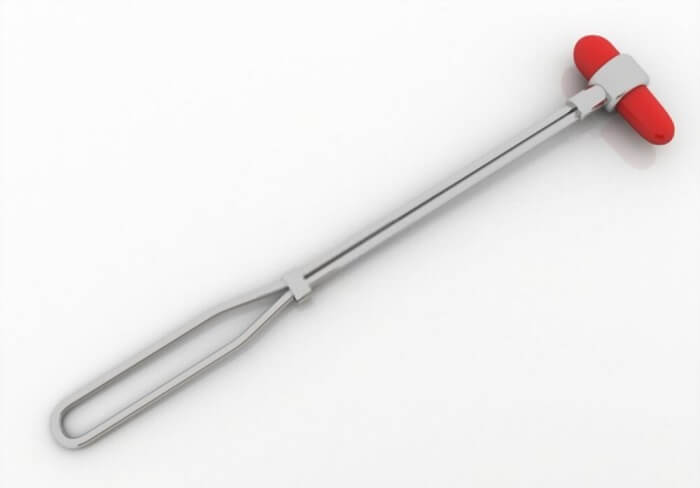
48. Gavel Hammer

49. Power Hammer
This is a mechanical forging hammer that is powered either by electricity or compressed air. Power Hammers are available in a variety of sizes from small benchtop machines for small welders and forgers to large behemoths for industries.
50. Jackhammer
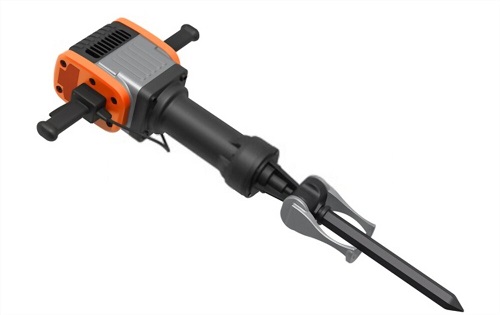
Different Types of Hammer – FAQs
Ans: A claw hammer, recognized for its flat head and claw, is commonly used for driving or pulling nails. It is not suitable for heavy hammering like ball peen hammers and is often made from softer steel alloys.
Ans: A sledgehammer is a tool with a large, flat metal head attached to a long handle, designed for heavy-duty tasks that require substantial force.
Ans: A soft-faced hammer or mallet is designed to provide driving force without damaging surfaces, and it reduces the force transmitted back to the user’s arm or hand by deforming more than a metal hammer.
Ans: A dead blow hammer is used to absorb tremors during striking, preventing damage to soft surfaces and improving striking force by reducing rebound.
Conclusion
Hammers are one of the simplest yet very powerful tools. Almost every household has a hammer as it helps in driving nails, breaking objects or shape metal very easily. There are different types of hammers for a variety of jobs and use cases but the main purpose of any hammer is the same: hit an object with great impact. We saw 50 types of hammers in this guide along with their typical applications. There are a lot more types but either they are very niche or not that popular.

